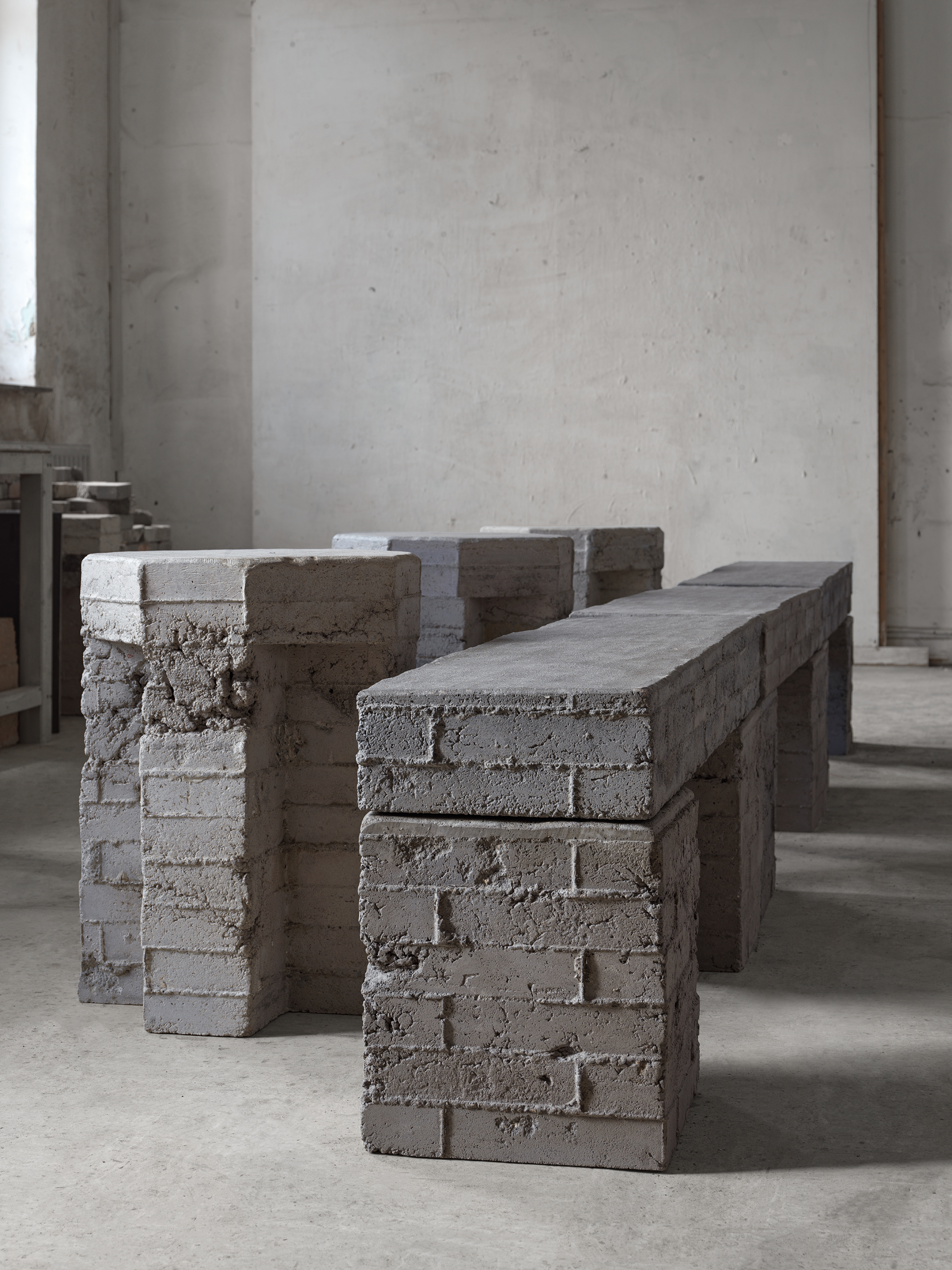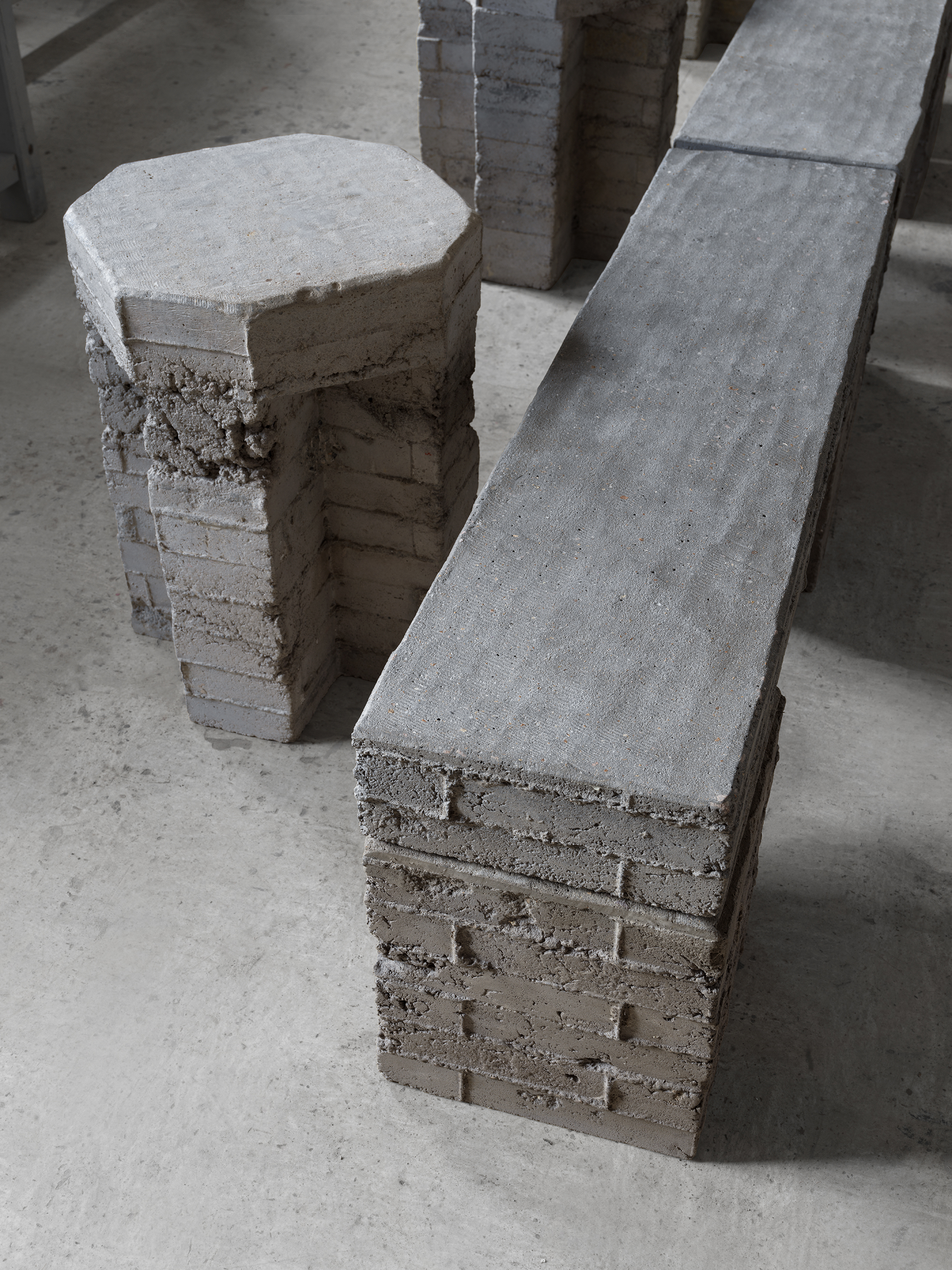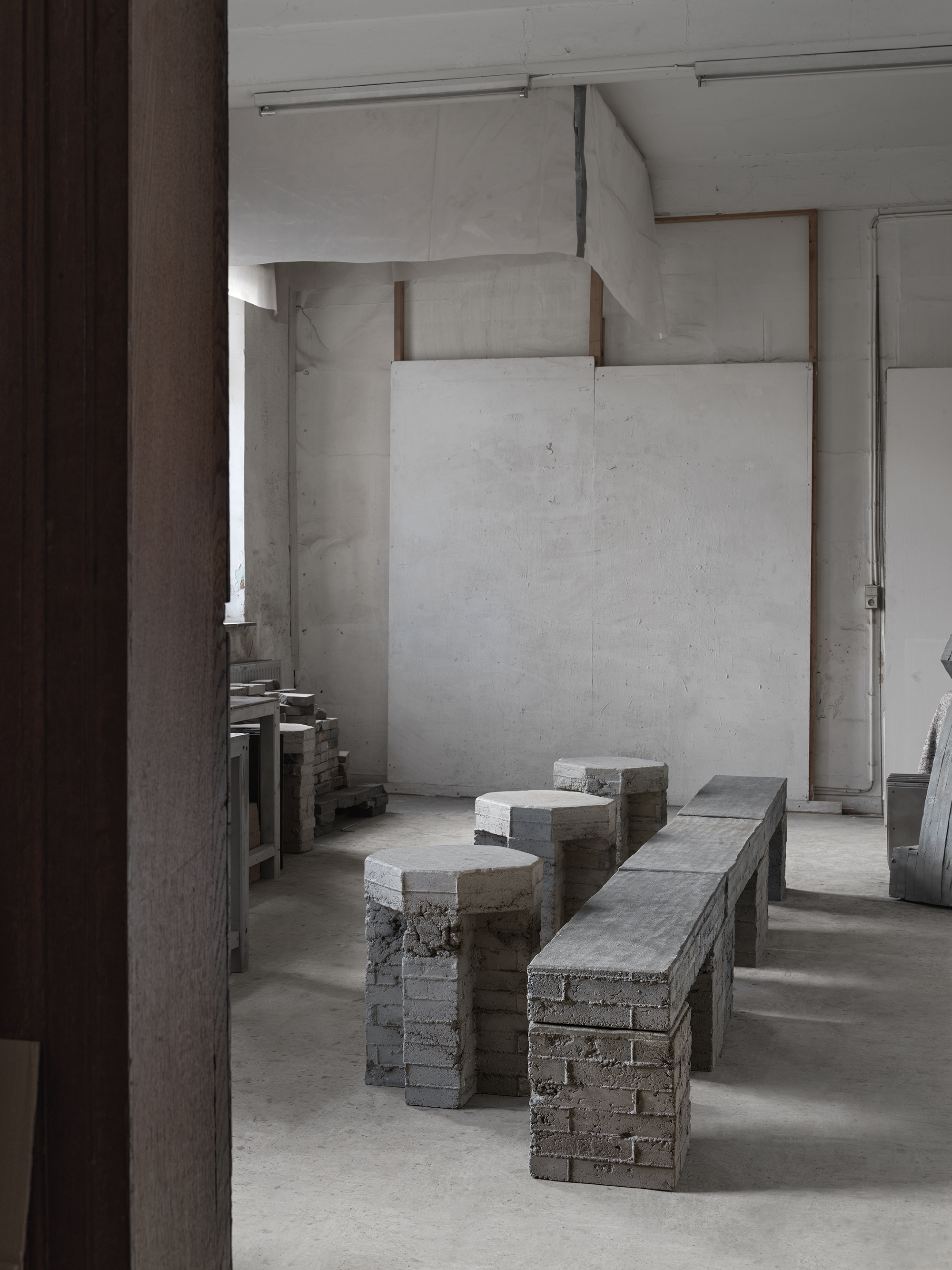Known for its extraordinary flexibility, durability, and timeless visual appeal, concrete is unquestionably one of the most favorite materials of architects. The great modernist architect Le Corbusier saw and used its architectural, emotional, and aesthetic potential like no other. Building on the foundations of Modernism, a new generation of designers is now starting to experiment with the material more prominently, coming up with innovative solutions that complement the current natural living trend.
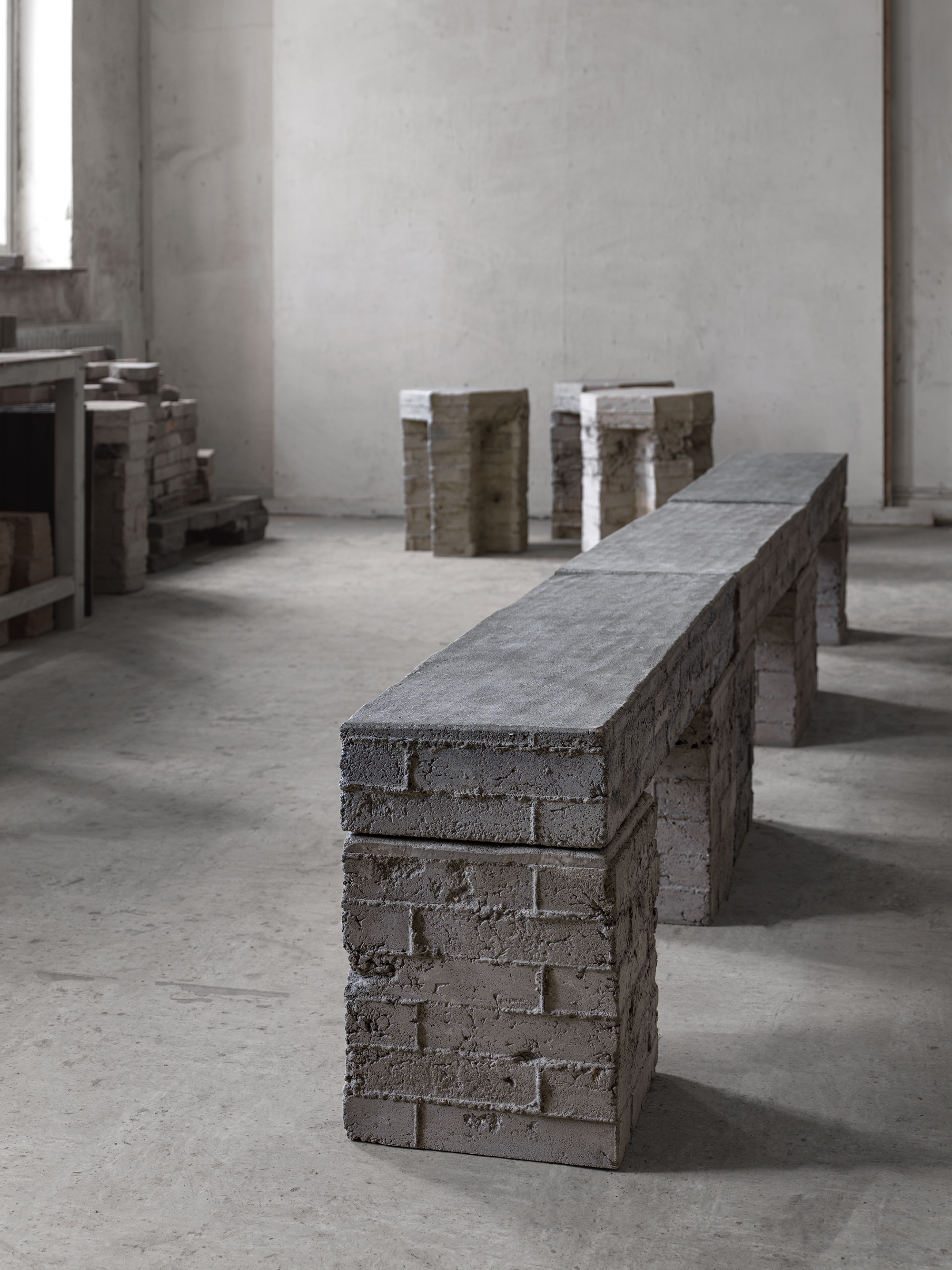
Ghent-based designer Bram Vanderbeke is one of them. Vanderbeke belongs to a young generation of Belgian designers whose practice stands out for its material, sculptural, and monumental qualities. His Architectural Objects are minimalist design installations with a distinctive corporality and pronounced natural properties of the concrete. In his designs, Vanderbeke explores the materiality, functionality, and raw aesthetic of the material like a sculptor, making full use of its form and texture. He creates striking yet straightforward objects that simultaneously serve as autonomous artistic expressions and functional design solutions.
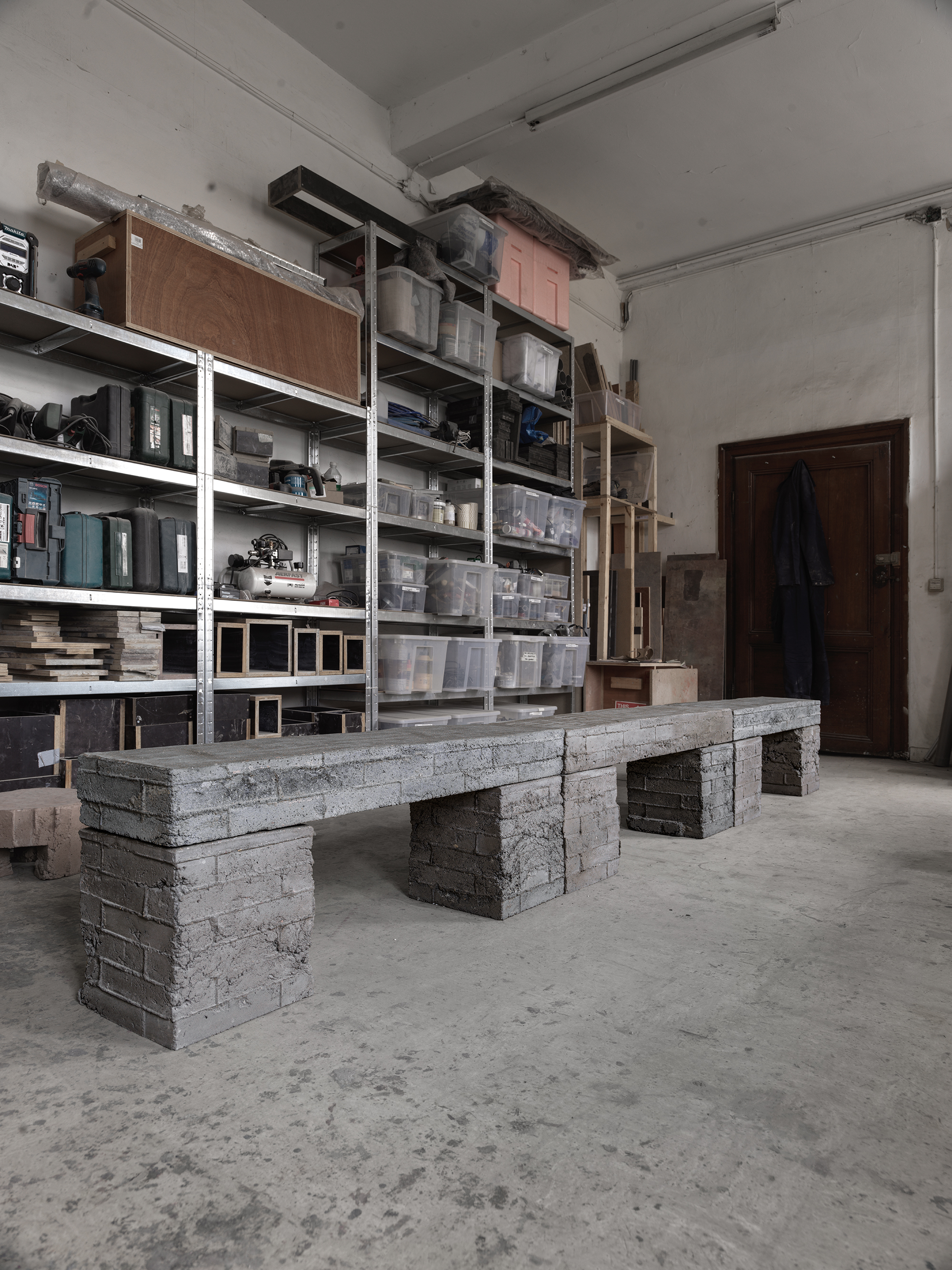
Vanderbeke’s Brick Bench/Table goes beyond functionality. It is a statement that grey rough-cast concrete can be beautiful. The minimalist collection of furniture consisting of benches, chairs, and side tables is inspired by the way construction workers construct buildings. The objects are created of concrete bricks molds and arranged into methodical compositions characterized by strong simplicity. The original texture of the blocks is left exposed with all of its natural imperfections. This unfinished quality of pieces, expressed in variations in color, hue, and texture, reveals the intrinsic architectural, sculptural and sensory potential of the material, which may vary depending on the architectural environment in which they become part. This adaptability to changing contexts often makes works designed by Vanderbeke affect the environment’s spatial perception, transforming the interaction between the object, the surroundings, and its user and creating a unique sensory and spatial experience.
